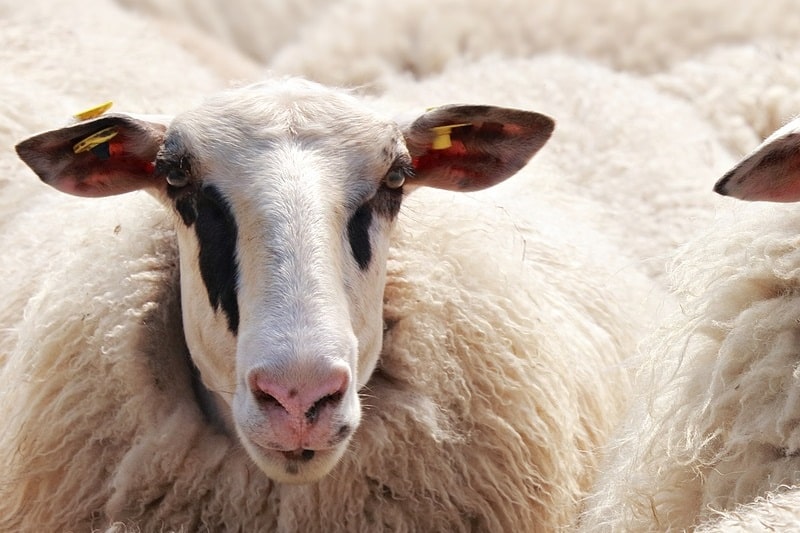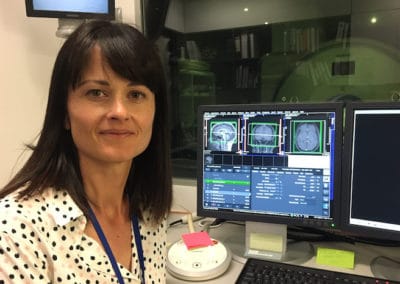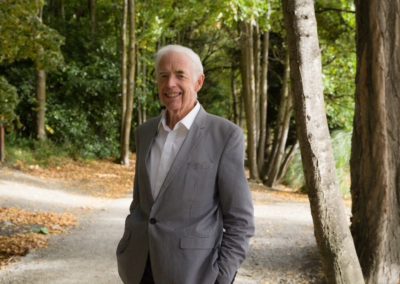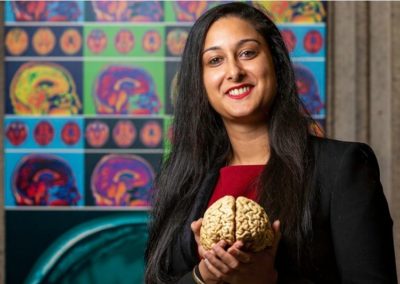“Our animal models wander around in paddocks, eat grass, and are well cared for. In many ways, they’re just normal sheep,” says BRNZ Principal Investigator, Prof. Russell Snell. But those sheep are special, because they’re helping Russell and his colleagues at the University of Auckland to better understand the function of genes in neurodegenerative conditions.
Russell’s research into Huntington’s disease started 30 years ago. He was part of the pioneering team that first identified HTT, the gene behind the condition. Since then, his interests have expanded to include Alzheimer’s, and neurodevelopmental disorders such as Autism. “I’m interested in a lot of stuff,” he says. “And I’m not loyal to any one technique – I just want to use the best tool for the job. If it doesn’t exist, we’ll develop it ourselves.” That was certainly the case with his sheep model for Huntington’s, which he first developed ten years ago. “We know what the gene for Huntington’s is. Now the challenge is to search for the earliest indicators of changes in that gene,” Russell explains. “The sheep give us a unique opportunity to do that.”
Using his model, the team found that, long before the sheep display any symptoms, there is a build-up of urea in their brain tissue. Urea is usually produced by the liver from ammonia, but according to Russell, there is some precedent for neurodegenerative diseases starting outside of the brain. “The hypothesis is that this urea is caused by disruption in the body’s normal Ammonia-handling processes. If that’s the case, it might be possible to repurpose existing treatments, and use them to delay the onset of Huntington’s. That’s the dream.”
Russell has confirmed his urea findings in human brain cells, thanks to his link with the Neurological Foundation Human Brain Bank, run by Prof. Maurice Curtis and Distinguished Prof. Sir Richard Faull. “This hypothesis will either be right or wrong”, he laughs, “We’re working hard to find out which – either way, it will be valuable.”

 Sheep models are also a key tool in Russell’s work on Alzheimer’s, because they have some natural genetic susceptibility to the condition. He’s introducing a specific gene mutation – one seen in a well-studied population of humans – into his animal models. As a result, Russell can directly compare his results to those from the large-scale human study. “While we can’t necessarily contribute to population studies,” says Russell, “Our sheep model is an additional tool to understand what’s going on with the pathology.”
Sheep models are also a key tool in Russell’s work on Alzheimer’s, because they have some natural genetic susceptibility to the condition. He’s introducing a specific gene mutation – one seen in a well-studied population of humans – into his animal models. As a result, Russell can directly compare his results to those from the large-scale human study. “While we can’t necessarily contribute to population studies,” says Russell, “Our sheep model is an additional tool to understand what’s going on with the pathology.”
More than that, Russell’s sheep could offer a valuable platform on which to test potential therapies for Alzheimer’s before going into human clinical trials. He’s collaborating with a group at the University of Gothenburg who look for biomarkers – such as the amyloid-precursor protein – in cerebrospinal fluid (CSF). “Our expectation is that in sheep, we’ll see changes very early on in the disease’s progression,” he explains. “So, when testing how effective drug compounds are on those biomarkers, we might not need to look at the brain at all. CSF is a lot easier to access, so it could be a game-changer.”
– Written by Laurie Winkless



